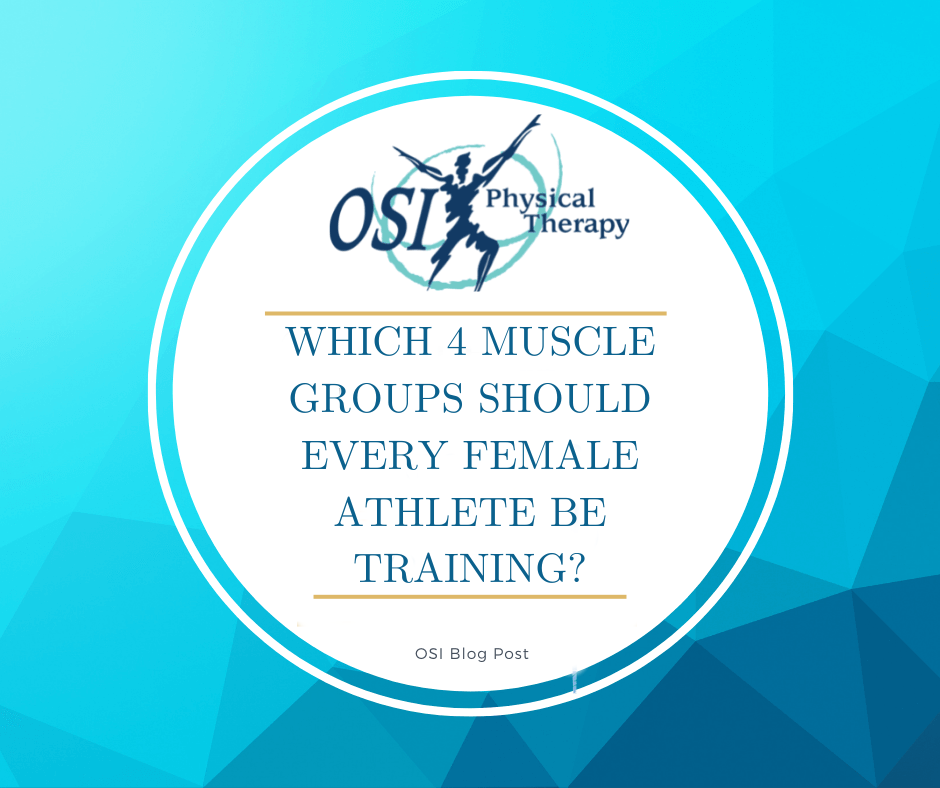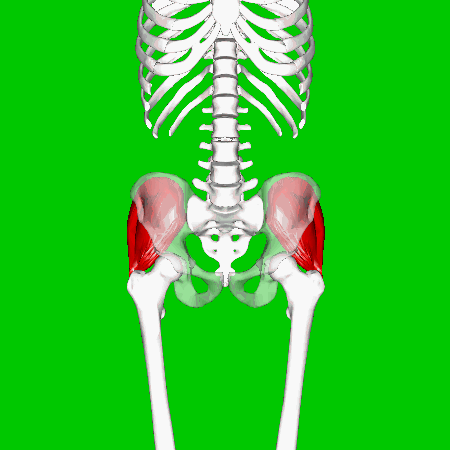
When I see athletes, especially female athletes, they notoriously come in with some vey specific muscle groups that are weak and undertrained. I don’t treat my patients with a cookbook approach. Every one is different and has specific needs, but it is amazing that such active people can move and compete at high levels and not be able to hold their leg up against gravity.
 First, a little background. Female athletes are up to 8 times more likely to experience knee pain, and more specifically, an injury to their anterior cruciate ligament (ACL – one of the things that keeps the two leg bones connected at the knee). There are many theories out there on why this is, but there was some great research done in the early 2000’s that showed that due to how a female brain develops and changes vs. a males during puberty, a female loses some of the timing of how her hip, glut, and hamstring muscles fire causing her quad to be overactive and change the mechanics of how the leg moves especially with landing like after rebound or with running. With this research, PT’s now have a better understanding of what muscles can be “re-educated” to improve mechanics and decrease the potential for knee as well as for many lower extremity injuries.
First, a little background. Female athletes are up to 8 times more likely to experience knee pain, and more specifically, an injury to their anterior cruciate ligament (ACL – one of the things that keeps the two leg bones connected at the knee). There are many theories out there on why this is, but there was some great research done in the early 2000’s that showed that due to how a female brain develops and changes vs. a males during puberty, a female loses some of the timing of how her hip, glut, and hamstring muscles fire causing her quad to be overactive and change the mechanics of how the leg moves especially with landing like after rebound or with running. With this research, PT’s now have a better understanding of what muscles can be “re-educated” to improve mechanics and decrease the potential for knee as well as for many lower extremity injuries.
The muscles I most often focus on are the hip muscles, the glut muscles, the hamstring muscles and the lower abdominal muscles. Let’s talk about each one of these muscles.
More specifically the gluteus medius. These guys are key in keeping the leg bone (femur) lined up properly from the hip to the knee. Without proper strength and control, the knee has a tendency to roll in, potentially causing knee cap pain, pain along the inside of the knee or hip pain along the front or side of the knee.
(or buttock) muscles. Without good strength here, a person has a more difficult time extending their hip, which is a motion that happens with something simple like walking, but also these muscles help to propel a runner forward or push a jumper up into the air. If a person doesn’t have strength here, the quads, which also help with these motions, have to work harder which again can put excessive forces at the knee joint and on the back side of the knee cap.
These muscles run along the back of a persons thigh. Hamstring injuries can be buggers to heal in and of themselves, but in regards to preventing knee injuries, they have a couple of roles. Hamstrings on their lower end, help bend the knee, which is obviously important in running and walking type motions. On their upper end, they also help extend the hip, which we talked about with the glut muscles. But hamstrings also help control how much force goes through the knee and helps to keep those at a normal level.
These muscles are so important because they control the position of the pelvis and this is important because the pelvis is where the leg attaches to the body to make up the hip joint. I usually see the pelvis tilted forward which predisposes the femur to rotating inward which then causes the knee to rotate in, which is often a mechanism of injury for and ACL tear.
There are a number of different exercises and retraining approaches a Physical Therapist can use to help an athlete or active person return to whatever it is they love to do and we would love to see you and advise you on what would work best for you if need be, but I hope this blog makes you more aware of what muscles to be focusing on in your training to keep you healthy and strong.
Leave your questions and comments below. Please also feel free to reach out if you’d like some help with your athletic training! aprose@osipt.com.
– Amy
FREE PHONE CONSULTATION: (651) 275-4706